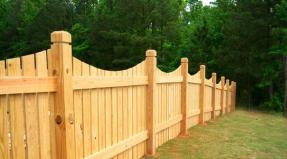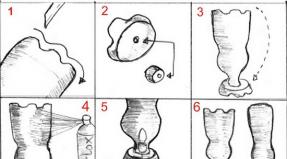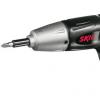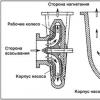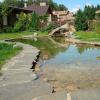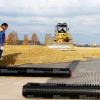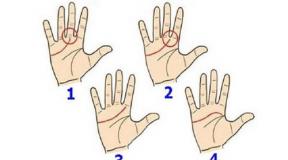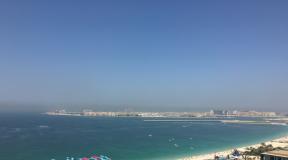How to strengthen the shore of the reservoir with your own hands?
The coastal soil of reservoirs is vulnerable and after some time undergoes deformation under the influence of humidity and weathering processes. Ecological materials - gabions and polymer gratings - help to build a beautiful and durable line of the shore of artificial and natural reservoirs.
Reinforcement of the banks with the help of these materials is widely used both in the construction of areas with large natural water bodies, and in the construction of artificial reservoirs within the boundaries of landscape design. The main task of strengthening the banks is to reinforce the soil layers closest to the surface to prevent erosion and weathering. The main materials used to strengthen the coastlines were beams, piles and stone, and territorial landscaping was also carried out within the coastal protection. The invention of the latest geosynthetic materials made it possible to reinforce the coastlines with the greatest effect, as well as to carry out various landscape design projects.
Characteristics of coastal protection materials and technologies:
- Planting perennial grasses and shrubs. Contributes to the foundation of the turf layer, which prevents washing out of the banks. The most important disadvantages are the long time for the formation of the root system of shrubs and grasses, dependence on climate and soil quality;
- Coir flooring. The purest material is suitable for use in protected areas. The disadvantages of coconut decking include low service life, low resistance to cold and limited use (reservoirs or water bodies with a weak current);
- Hardwood (larch, oak). Allows you to strengthen steep slopes, has a beautiful appearance and sufficient durability. The main disadvantage of wood piles is the quality of gradual destruction under the influence of the ice cover, which appears in the recesses and cracks of wood material during the cold season;
- Metal and concrete piles. They can strengthen even coastlines with great steepness. The main disadvantage is heavy installation, which requires the use of special equipment, as well as a not very beautiful view;
- Polymer grate. It is often used in road construction and to strengthen the upper layers of the soil. The filler can be either gravel or soil. After the grass sprouts, the lattice becomes invisible, so this material is widely used in design;
- Gabions that are filled with rubble or stone. The most reliable method of strengthening banks, suitable for work with banks of strong steepness. The appearance and arrangement of gabions is suitable for a huge number of projects in the field of landscape design.
The more common newest materials for shore protection are gabions and volumetric gratings, which combine environmental safety, fairly good appearance and high durability. The installation of such structures does not involve the use of special equipment, due to which it can be produced even in areas with a complex surface and small areas.
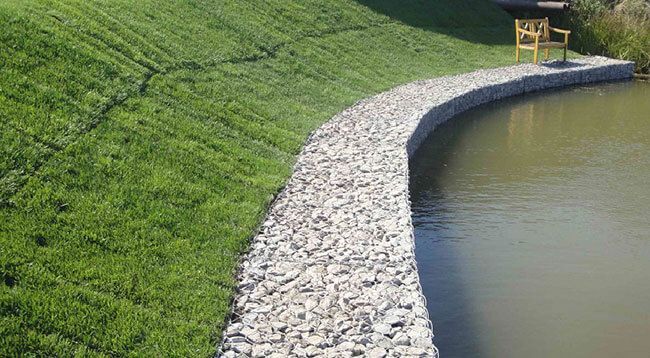
Strengthening the banks with three-dimensional gratings
Volumetric gratings are a construction of polymer strips, which are connected by welding.

The gratings are invulnerable to water and fungal organisms, they tolerate low temperatures and mechanical stress well. Volumetric lattice cells are arranged in the form of a checker and can be filled with various bulk compositions. It is recommended to use such a grid when working with coastlines of low and moderate steepness. In case of a rapid current, gravel is used as a filler, in the case of stagnant waters and a small current, turf, pebbles and marble chips can be used. A well-known way to strengthen the banks with a lattice is to fill the reinforced frame with turf - after the appearance of perennial shrubs and grasses, the lattice is indistinguishable from a close distance, and the entire structure is reinforced by the roots of plants. This option is often used for landscaping coastlines, which consist of clay soil. Very often, such gratings are used to strengthen the banks of the pond with their own hands.
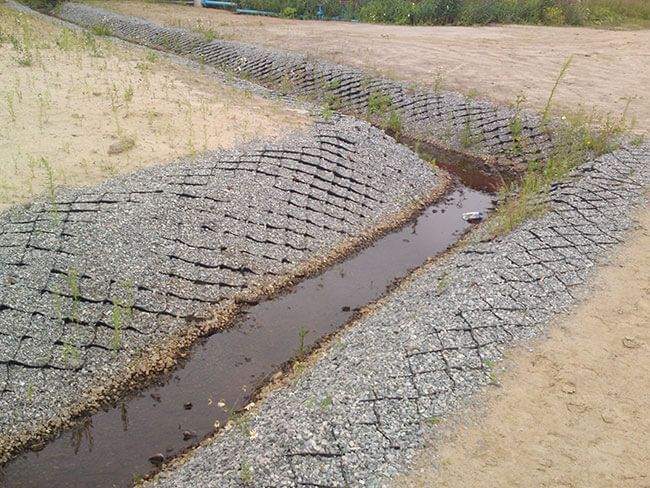
Grille installation:
- Preparatory operations: removal of the upper layers of soil, roots, stones, manual tamping;
- Reinforced frame assembly: installation of lattice parts, fixing with anchor bolts, connection of parts using a pneumatic stapler;
- Filling with filler.
Bank reinforcement with gabions
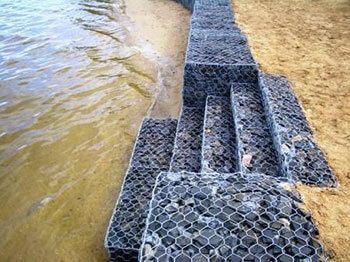
Strengthening the river bank with your own hands can be done in another way, namely with the help of gabions. Gabions are volumetric cellular structures made of galvanized metal rod, which are divided into sections and filled with stones, gravel or pebbles. Depending on the surface of the site and the goals of the design, cubic gabions or gabions in the form of a Reno mattress are used.
Shore strengthening gabions help not only strengthen the shore, preventing weathering and washing away processes, but also transform the shore, creating beautiful smooth lines. If the shoreline of the reservoir is made steep, the gabions adjacent to the water can be strengthened with special shields, which are made of hardwoods. Unlike concrete and metal piles, gabions are not only durable, but are also gradually included in the ecological system of reservoirs.
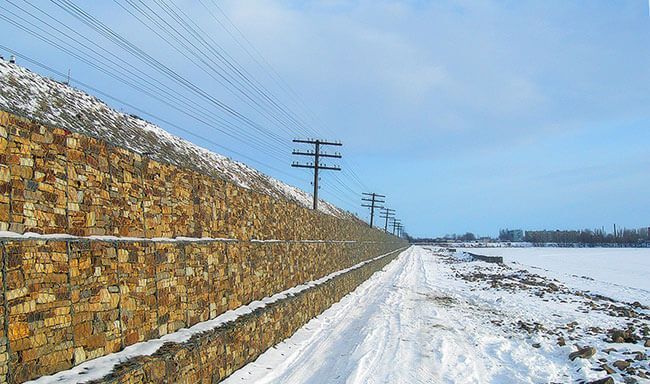
Installation of gabions:
- Preparatory operations: ground leveling, manual tamping, if necessary, organization of a geotextile layer;
- Installation of gabions: a new frame is attached to the walls with rods and fixed on the ground with anchors;
- Filling with filler.
In places with highly moist soil, in addition to gratings and gabions, draining materials are used to protect the banks. The most commonly used non-woven textile is a durable felt made of polymer fibers that has the properties of a filter with a check valve and forms a layer of drainage holes between the soil and the reinforced frame.
Rating 0.00 (0 Votes)

